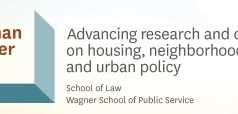Report Quantifies a Decade of Housing Production Under 421-a
Tax Exemption Used for 7 in 10 New Units in Most Buildings
New York – RealEstateRama – A new report from the NYU Furman Center provides a detailed picture of the housing produced under the contentious 421-a tax exemption, including how trends shifted when the program was last reauthorized. The Data Brief shows the exemption was used for 68 percent of all completed new housing in buildings of 4 or more units across the city between 2010 and 2020. More than 117,000 units qualified for the tax break during the period studied, with production peaking between 2017 and 2018. Read the full Data Brief on 421-a.
The 421-a program was first introduced in the 1970s, when the city faced population decline, disinvestment, and a fiscal crisis. Since then it has been reauthorized and adjusted to provide various incentives for affordable housing development, most recently in 2016 under the name ‘Affordable New York.’ Affordable New York will sunset in June 2022, and its future has been a source of much public debate, with some critics calling for repeal. Governor Kathy Hochul has outlined broad parameters to end the program and replace it with a tax exemption similarly focused on incentivizing rental housing development, but including deeper affordability requirements, longer affordability terms for income-restricted units, and a new option for fully-affordable homeownership development, and carbon-neutral and electrification requirements.
“An informed debate on the future of 421-a or its replacement requires understanding its impact on housing production over the last decade,” said Matthew Murphy, Executive Director of the NYU Furman Center. “This information gives policy makers the foundation they need to craft a program that incentivizes housing for a growing city, and to address the equity issues at stake in where it is built.”
Data compiled by the NYU Furman Center show the impact of the 2016 reauthorization – the share of new condo units qualifying for the abatement dropped from 97 percent in 2010 to just 13 percent in 2020. While the number of income-restricted units built under the program increased after the 2016 changes, the number of units targeted toward lower income households (those earning 60 percent of Area Median Income) fell, with far more units built for households earning 130 percent of AMI. Despite this shift, nearly 2,000 new units for households at or below 60 percent of AMI were created under Affordable New York as of August 2021. Further, while half of studios and roughly a third of 1BR units qualifying for the subsidy were affordable to lower-income households, larger units were increasingly marketed to those higher on the income scale, based on a review of buildings listed on the city’s Housing Connect portal.
The Data Brief also maps out the geography of 421-a construction over the last decade. Should the tax break expire, the decline in associated tax expenditures by New York State will be gradual, with very little additional revenue available prior to 2030, and the full $1.5 billion not phasing out until 2055.
Read the full brief The Role of 421-a during a Decade of Market Rate and Affordable Housing Development.
For media and data inquiries, please contact:
917-512-1571















